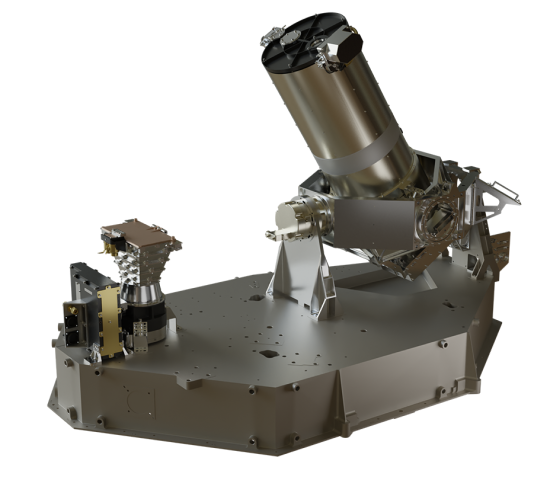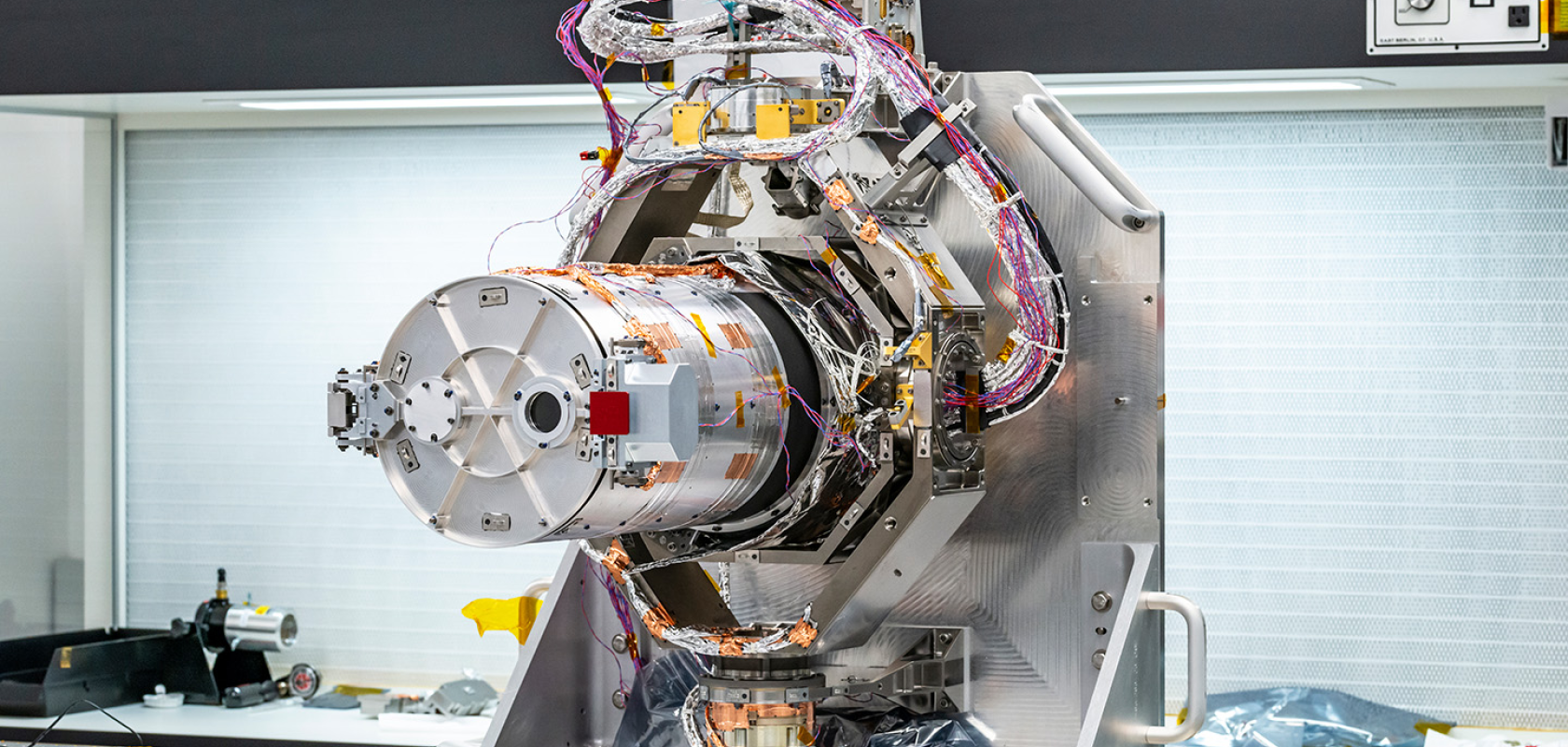A narrow-angle camera (NAC) destined for NASA’s Europa Clipper mission has been delivered to the Jet Propulsion Laboratory (JPL) in Southern California.
The high-resolution camera, developed at the Johns Hopkins Applied Physics Laboratory, will reveal features less than a metre across on the surface of Europa – the smallest Galilean moon orbiting Jupiter – as it performs global mapping and regional stereo imaging.
Europa Clipper is NASA’s largest planetary spacecraft, stretching more than 30.5m with its solar arrays deployed. Set to launch in October 2024, it will perform around 50 flybys of Europa, which according to NASA almost certainly has a liquid-water ocean beneath its icy surface, and could harbour all the ingredients needed for life.
The spacecraft will help validate these hypotheses via a detailed study of the surface through the images it can provide.
The NAC imager is one of two cameras making up the Europa Imaging System of the Clipper mission, the other being a wide-angle camera that will acquire a continuous image swath of the Europa’s surface in colour and stereo. The NAC itself is a reflecting telescope that uses a large mirror to direct light through a series of other mirrors and lenses onto an 8-megapixel sensor.
The camera is designed to take high-resolution images (equating to 0.5m per pixel) focused on small portions of Europa’s landscape.
According to NASA, no icy satellite has been imaged at resolutions this fine from orbit before, with multiple missions having already imaged Europa, including Voyager 1, Voyager 2, Galileo and Juno. These spacecraft returned photos of pits, knobs, craters, crisscrossing faults and frozen ice blocks. But together they’ve captured only about 15% of the surface at even moderate resolution, and very little of it in colour or stereo.

A 3D rendering of the Europa Imaging System. The Wide-Angle Camera (WAC) is on the left, and the Narrow-Angle Camera (NAC) is on the right. (Image Johns Hopkins APL/Ben Smith)
The high-resolution NAC images will feed into a broader effort to study the many geologic features on Europa’s dynamic, fractured surface. By examining the structures in detail, researchers hope to uncover past, recent or even ongoing geologic processes that formed the surface, and link the features to one another to better decipher ongoing sub-surface processes.
For example the NAC will provide the necessary global-scale imaging for identifying surface deposits where plumes of water vapour may have vented (or still be venting) from the ocean below, as well as searching for direct evidence of active plumes. If present, they would indicate an important exchange between the surface and subsurface. To date, however, the evidence for plumes remains ambiguous.
At JPL the NAC will now be run through an additional series of tests. The camera will then be assembled into its final configuration on Europa Clipper for physical and environmental testing with the other instruments and spacecraft parts delivered last year. This includes the wide-angle camera, propulsion module, radio frequency module, electrical harness, a plasma instrument for magnetic sounding, and major assemblies of the mission’s mapping imaging spectrometer.


